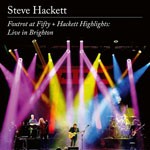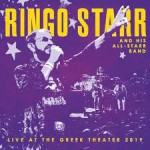Share the post "Book review: The Development Of Large Rock Sound Systems – Chris Hewitt"

A Dandelion Records Book [Publication date 14.08.20]
‘The Development Of Large Rock Sound Systems’ is a book with no beginning and no end, but it has plenty of substance in the middle.
Much like the other 7 books from the prolific Chris Hewitt, it has one of the longest subtitles, which for the record reads: “Including WEM At the Isle Of Wight, The Pink Floyd WEM System And Guitar Cabinets And Beyond.’
And while there’s quite a bit of “Beyond”, the main thrust of the book concerns Charlie Watkins WEM PA’s, which transformed the early 70’s festival scene, the installation of Pink Floyd’s rig in Pompeii, and the way Dave Martin bought mid-range sophistication to PA stacks.
The book is ostensibly for audio geeks, but there’s enough of whiff of nostalgia surrounding The Isle Of Wight Festival, Floyd in Pompeii and glances back at The Weeley Festival and the Roundhouse etc, to translate old hippy curiosity into hard sales.
Presented as an A4 size paperback full of wonderful photos and insightful research, there’s still plenty here to interest the average rock fan.
The book evocatively drops the reader into the late 60’s, a time when change was afoot, specifically as: “bands changed from pop groups to rock groups.”
There is a mission statement of sorts in the opening paragraph, which quotes Charlie Watkins (from WEM – Watkins Audio Music) thus: “I was determined to solve the problem of instrument amps being louder than the PA.”
And in doing so he kick started a revolution in PA systems to overcome: “Problems of feedback, lack of presence, distortion and downright unreliability.”
Bands such as The Who, Zeppelin, Fleetwood Mac and Floyd embraced the new gear and the rest is the sort of history that this book examines.
Together with a Marquee Club employee John Thompson, Watkins set about building a PA that would overcome the limited range of the the relatively quiet jazz and blues festival set up.
The book approaches these events chronologically and later looks back at parallel PA development through subsequent innovators like Dave Martin and Tim Boyle.
But it doesn’t dwell on the extant late 60′s scene, which despite the jazz & blues festival moniker was significantly influenced by folk music, hence the low volume.
By the 1967 Windsor Festival however, Watkins had delivered 1000 watts and a nascent: “mixer-to-power-amp-to amplifier-to-spear arrangement that still figures in most contemporary PA systems.”
There are a few illuminating gems along the way, how for example Roger Chapman improvised by sticking a WEM 1×12 speaker on his towel and angling it towards him so he could hear himself.
Windsor we are told was the turning point for both WEM and the industry as a whole, as the company’s speakers were bought by the likes of Arthur Brown, Rod Stewart, The Faces and Colosseum’s John Hiseman etc.
WEM’s monitors were initially used by Cat Stevens, while the big rig set up was used by Johnny Winter at the Albert Hall and The Stones in Holland.
Watkins it turned out was a true music fan, and in the words of Fleetwood Mac soundman Dinky Dawson: “Was more interested in the music and how to reproduce the band’s sound than in selling me equipment.”
In the chapter of WEM’s parabolic reflectors, Hewitt traces the origins of the conal shaped PA gear as sexual fetish objects, the way roadies became sound engineers and the overall fact that “sound reinforcement” didn’t actually start until the early 70’s
The photos meld in to the text perfectly, albeit they aren’t always captioned. Isle of Wight pics include Blodwyn Pig, John Sebastian, 3 pages of Hendrix and The Pink Fairies and Hawkwind outside Canvas City.
There’s also a 1969 pic of Zeppelin on a tiny stage at the Bath festival. What’s really missing – with the exception of the recollections of American stage crew member Carey Chenoweth – is some first hand accounts from band or crew members about the actual events and the difference the gear made.
By ‘72 Watkins still provided sound for the Bickershaw and Grangemouth festivals, but he realized he was being overtaken by for example, Kelsey & Morris’s horn bins.
It’s a significant part of the book, as the whole PA industry took off soon after, along with monitors in the early 70’s.
A chunk of the book is given over to Pink Floyd, including the roles of Pete Watts and Alan Styles. Watts actually handed over the mixing of Hendrix to Dave Gilmour no less, but the real meat of the book comes in the highly evocative chapter of Floyd in Pompeii with a Q&A with film director Adrian Maben.
It fills the pages with the kind of presence, most of the audio geeks sought in their mixes.
There are inevitable mentions too of Dave Martin’s installed rigs and Jim Marshall at Weeley etc, but the book slightly fragments towards the end, possibly reflecting the change in an industry that was born in a naïve idealist era and became transformed into a power/volume driven business.
There’s no index, meaning the photos take on an even bigger role in the book. The final pictures of the 1985 Dire Straits rig looks like something out of space station, something you suspect would have made the late Charlie Watkins quietly chuckle. ****
Review by Pete Feenstra
Featured Artist: JOSH TAERK
Since early 2020 Josh has been entertaining us with exclusive monthly live sessions,
Check out videos here: https://www.facebook.com/getreadytorockradio
David Randall presents a weekly show on Get Ready to ROCK! Radio, Sundays at 22:00 GMT, repeated on Mondays and Fridays), when he invites listeners to ‘Assume The Position’. The show signposts forthcoming gigs and tours and latest additions at getreadytorock.com. First broadcast on 16 November 2025.
UK Blues Broadcaster of the Year (2020 and 2021 Finalist) Pete Feenstra presents his weekly Rock & Blues Show on Tuesday at 19:00 GMT as part of a five hour blues rock marathon “Tuesday is Bluesday at GRTR!”. The show is repeated on Wednesdays at 22:00, Fridays at 20:00). This 600th show was first broadcast on 18 November 2025
How to Listen Live?
Click the programming image at the top of the page (top right of page if using desktop)
Get Ready to ROCK! Radio is also in iTunes under Internet Radio/Classic Rock
Listen in via the Tunein app and search for “Get Ready to ROCK!” and save as favourite.
More information and links at our radio website where you can listen live or listen again to shows via the presenter pages: getreadytorockradio.com
Power Plays w/c 1 December 2025
We feature all the artists selected in this sequence in 2025.
Featured Albums w/c 1 December 2025
09:00-12:00 The Best of 2003 – 2025 (Melodic Rock)
12:00-13:00 The Best of 2003 – 2025 (Melodic Hard Rock)
14:00-16:00 The Best of 2003 – 2025 (Singer Songwriter)
Our occasional Newsletter signposts latest additions to the website(s). We also include a selection of recent top albums, based on GRTR! reviewer ratings. The newsletter is sent out a few times a year.
If you’d like to register to receive this occasional mailing please complete the form:
If using a smartphone/tablet please tap here or re-orientate your device
(Note that this registration is separate from site registration which allows you to leave comments and receive daily emails about new content. If you wish to register for this – in addition or separately – please click or tap here – for more information – the form is at the foot of each page. Please read our privacy policy when opting-in to receive emails.
Recent (last 30 days)
Share the post "Book review: The Development Of Large Rock Sound Systems – Chris Hewitt"



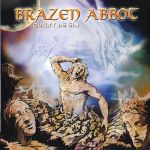



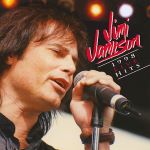




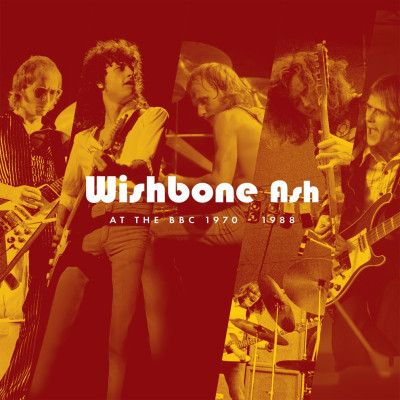









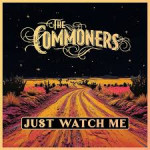

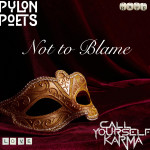


 PDF - you can delete unwanted sections
PDF - you can delete unwanted sections























